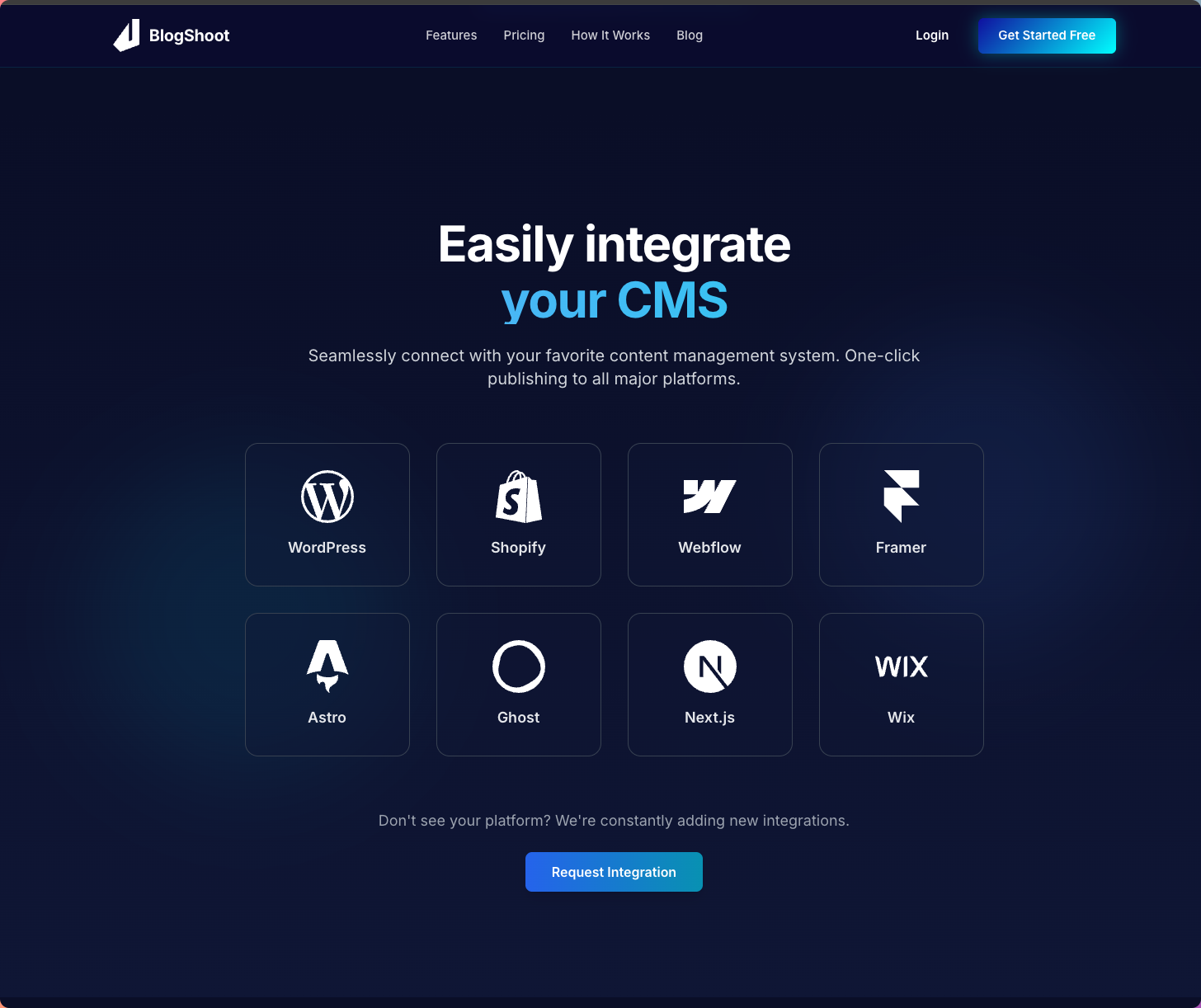Step by Step: Building Traffic Assets (Not Just Articles) with BlogShoot
Most AI writing tools get SEO wrong. They treat content as a “volume game”—giving you 200 random articles for 200 random keywords.
That is the “Consumption Trap.” You burn credits, publish pages, but traffic doesn’t grow because Google sees 200 isolated, weak pages.
BlogShoot is different. We don’t just generate articles; we build Content Matrices. We use a Theme Cluster Strategy to turn keywords into authoritative knowledge networks that Google loves.
Here is the step-by-step process of how BlogShoot builds high-ROI traffic assets for you.
The Core Philosophy: Theme Clusters vs. Scattered Keywords
Before you click “Generate,” understand the difference:
-
Scattered Strategy (The Old Way): You publish 3 articles: “How to clean jars”, “SEO tips”, and “Packaging trends”. They are unrelated. Google sees you as a generalist, not an expert. SEO Value: 3.
-
Theme Cluster Strategy (The BlogShoot Way): You publish a “Theme Package” about “Glass Jar Branding”.
- Pillar Content: “Glass Jar Design Ideas” (High Volume)
- Support Content: “How Custom Labels Improve Packaging” (High Intent)
- Authority Content: “Case Study: Successful Packaging Brands” (High Trust)
These 3 articles link to each other. SEO Value: 30.
Here is how you execute this in BlogShoot.
Step 1: Discover Value (Finding the Theme Package)
You don’t start with a list of 1000 keywords. You start with your business goals.
1.1 Input Your Domain
Tell the Research Agent what you sell (e.g., “Cosmetic Packaging for Small Brands”).
1.2 AI Identifies “Theme Opportunities”
Instead of a raw list, BlogShoot’s AI analyzes search intent and difficulty to propose Theme Packages.
It looks for a “strategic gap”—a topic where you can become an authority quickly.
- Example Result: The AI suggests a cluster around “Sustainable Packaging for Startups”.
- Why? High search volume for general terms, but low competition for specific “startup” angles.
Step 2: Analyze the Opportunity (The Matrix Structure)
Once you select a Theme Package, BlogShoot structures the Content Matrix. It doesn’t just write 3 random posts; it assigns strategic roles to each piece:
Role A: The Pillar (The Traffic Magnet)
- Goal: Capture broad search volume.
- Content Angle: Comprehensive “Ultimate Guide” or “Listicle”.
- Example: “10 Sustainable Packaging Materials for 2025”
Role B: The Support (The Problem Solver)
- Goal: Answer specific questions and capture long-tail intent.
- Content Angle: “How-to” or detailed explanation.
- Example: “How to Switch to Glass Packaging Without Breaking the Budget”
Role C: The Authority (The Trust Builder)
- Goal: Prove expertise and convert readers.
- Content Angle: Case study, data analysis, or contrarian take.
- Example: “Case Study: How Brand X Increased Sales by 40% with Eco-Friendly Boxes”
You review this plan in one glance. It’s not a list; it’s a battle plan.
Step 3: Generate & Theme Echo (Content Creation)
This is where the magic happens. When you click “Execute,” 10 AI Agents go to work—but they talk to each other.
3.1 Contextual Writing
The Writer Agent knows that the “Support” article is related to the “Pillar” article. It references concepts across the cluster, ensuring consistent terminology and tone.
3.2 The “Theme Echo” (Automated Internal Linking)
This is the most critical step. Most tools ignore internal links. BlogShoot automates them strategically:
- The Support article links up to the Pillar (passing relevance).
- The Pillar links down to the Authority piece (passing traffic).
- The Authority piece links back to your product page (passing value).
This creates a tight “knowledge web” that tells Google: “This site is an expert on Sustainable Packaging.”
Step 4: Review and Deploy
In 3 minutes, your Theme Package is ready.
What you get:
- 3-5 Fully Formatted Articles: H1, H2, H3, bullet points, and bold text for readability.
- Strategic Visuals: AI-generated images that match the context of each specific section.
- Perfect On-Page SEO: Meta titles, descriptions, and schema markup.
- The Internal Link Structure: Already embedded in the HTML.
One-Click Publish
You push the entire cluster to your CMS (WordPress, Webflow, Shopify, etc.).
- No copying and pasting.
- No manual image uploading.
- No plugin configuration.
Conclusion: Focus on ROI, Not Usage
The goal of using BlogShoot isn’t to “use up your monthly credits.” It’s to build assets.
By publishing Theme Clusters instead of random posts, you are building a moat around your niche. Even if you only publish 5 clusters a month (15 articles), the compounding effect of this internal linking strategy will outperform competitors publishing 50 random AI articles.
Don’t just shoot words. Shoot for Authority.
